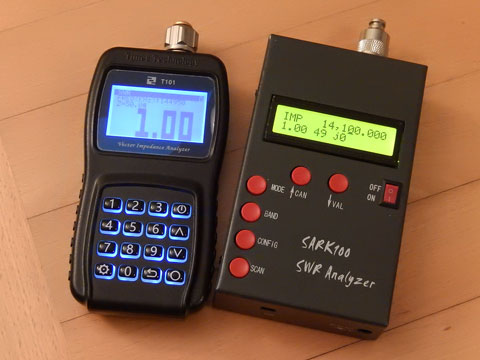
What is an antenna analyzer
An antenna analyzer is a device through which without the need for other auxiliary devices we are able to analyze antennas in a particular spectrum. The results it gives us should tell us what it means about the antenna especially whether it resonates where we want and, if not, what parameters in terms of impedances in a given frequency section is to determine how to continue the antenna tuning. In the past when similar devices were unreachable to most radio amateurs due to very high prices, we were forced to make do with a SWR meters but today these devices can be found at comparable prices to SWR meters but the utility is several times higher.
What is the difference between SWR meter and antenna analyzer
Technically, these are two main differences. A SWR meter is a passive device that can measure the performance or the ratio between forward and reflected RF power. This means that it requires a source of RF signal for its activity, which is usually a transceiver. On the contrary, the antenna analyzer is equipped with both a measuring part and a RF signal generator i.e. not requiring additional equipment for its operation. The second difference lies in the principle of measurement and therefore in what information it can convey to us. The SWR meter is a purely scalar measuring instrument while the antenna analyzer is a vector measuring instrument and it is a cheap analogy of a VNA (vector network analyser) measuring instrument.
What is the difference between scalar and vector
Simply put about both between a compass and a GPS receiver. The scalar is talking about how big it is for example. distance to the object but nothing says about which direction the object is located from us. Or as in the case of a compass we can say the other way around and that we know which way we don’t know how far. On the contrary the vector command tells us which direction, but also how far the object is located i.e. that we immediately have an idea of where the exact object is located. Since when we measure antennas the impedance is the vector value measurement so the scalar value (SWR) will only tell us how far away we are from the resonance, but we don’t know which direction to go. In the case of a vector measuring method by an antenna analyser we learn the value of vector-shaped impedance so we know exactly which direction to go when tuning. In most cases however most of us will only fine-tune already calculated antennas that are already made or designed so that their resonance is roughly in the places where we wait and for that reason we will not be so interested in the true vector value of a given impedance in other words the real and imaginary component impedance the vector but only the scalar value of the SWR and therefore we will rather take advantage of the fact that the antenna analyzer is also a source of RF signal and we therefore welcome that we do not have to carry trx with us in addition to the measuring device.
What consists of an antenna analyzer
The antenna analyzer consists of :
- the frequency of the relatable RF signal source which has a sinus flow and is defined by the range of frequencies in which it is capable of being retuned a certain signal output level the power of which contributes to the measurement dynamics and finally a certain measure of the quality of the sinus course (sinus signal with a minimum of higher harmonic) output signal which must not change too much throughout the measurement or depending on the type of load.
- The RF bridge through which further measured data are
- The control system that matches the signal source while also evaluates the information from the RF bridge on the basis of which it then calculates the specific impedance value in vector format as well as SWR and other variables.
- Display unit (alphanumeric display or graphic display, analog measuring instrument, etc.)
- Power supplies and other customizable circuits
For the accuracy of the measured data each of these circuits needs to be designed as optimally as possible because the error in each of the circuits is significantly involved in the distortion of the measured result.
What can we do with antenna analyzer
With the help of an antenna analyzer it is possible to measure a huge number of quantities and it is on the hardware and also the software equipment of the individual model that will offer us everything.
It’s like:
- SWR
- Impedance, resistance, recitation and phase
- Measurement of impedance, attenuation and length of coaxial cable
- Measurement of capacity and induction
- Measurement of LC traps (parallel resonance circuit)
- Measurement of frequency characteristics and filter attenuation (models with separate output and input)
- Create the frequency dependence of individual measured antenna parameters in a wide frequency range by rendering in a graph (models with graphic display or PC connection)
What types are produced or is it possible to homemade
Antenna analyzers are produced in different price categories, with different parameters, both in the variety of measured parameters and in different quality and accuracy of the measured data and especially for different frequency bands. In most cases, radio amateurs need to cover the HF band from approximately 1.8MHz to 50MHz, then the VHF band from 144MHz to 146MHz and finally the UHF band from 430MHz to 440MHz. Such a wide range of frequencies can only cover the minimum measuring instruments, so in this case we can not do without at least 2 antenna analysers (one for HF and the other for The VHF/UHF band). In addition to the frequency range and quality of processing, there are also differences in SW equipment. Some older devices only allow manual tuning and monitoring of the current measured value (they do not allow for a graphical evaluation of antenna dependency in a wide spectrum). Others, even though they do not have a graphical display, already have the automatic scanning function or connections to a PC where values can be exported to excel but there are also devices with a graphical display where the frequency dependence is immediately seen or models with colour and touch display. There are several options to choose from. Keep in mind, however nice a device with many features, if it doesn’t have a well-mastered RF hardware, it’s far from being a regular model that measures more accurately. As far as home construction is concerned, it’s possible. There are freely available structures but these open projects have already been seized upon by the Chinese and many times it is not financially worth making such a project at home as on ebay, aliexpresse, etc. can be found at a fraction of the cost of material and printed circuit boards already finished analysers, although many times problem. As an interesting solution, there is the possibility of purchasing such a product and then the domestic remodeling and fine-tuning of certain parts which are often neglected in cheap Chinese clones.
Conclusion
The antenna analyzer is an indispensable helper for tuning or building antennas. In addition to the normal measurement of impedance and SWR we can many times replace other measuring instruments such as induction meter, capacity or even GDO (grid dip oscilator) which can be used e.g. contactless trap measurement. As is already customary in the case of poor design or poor design, the antenna analyser can do more to harm us than help us by conveying false information. Next time, we’ll say something about how to adjust one shortwave antenna analyzer that can be bought at a reasonable price but in some cases may surprise us.



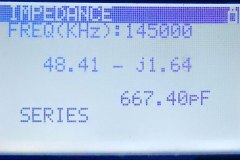
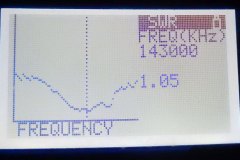
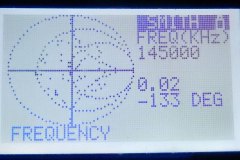
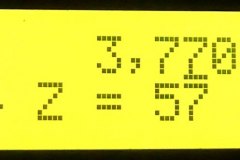
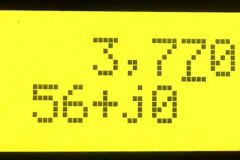
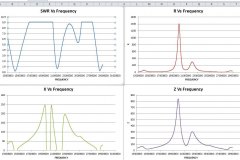
What is the difference between SWR meter and antenna analyzer?
Thank you.
Hi now I publish new post about SWR meters.
Bye
Hallo
Sorry for the delay, but I have got a problem with the comment notification. SWR meter is basically for measuring standing wave ratio (for example 1:2). This information is somethink like ratio between forward and reflected energy on the RF line. In most cases it is only passive meter without RF generator so it is necessary to have RF generator (for example transceiver) which can inject energy to RF line and SWR meter only measure how much energy is forward and how much is reflected. Antenna analyzer is active measuring equipment with built in RF generator and it show vector format (complex format) of impedance of system which is connected to Antenna analyzer. Impedance is responsible for reflected energy on the RF line so it can also measure SWR too. In short : Antenna analyzer is more sophisticated equipment like the SWR meter. With SWR meter you know only if there is any reflected energy but with anenna analyzer you know this also but you know why (if there is some reflected energy on RF line it means the impedance is not only resistance but there is some reactance and thanx to antenna analyzer you know which type (capacitive or inductive) and how much it is. Then it can be easily to tune antenna for the best result.
Regards Igor OM4IK